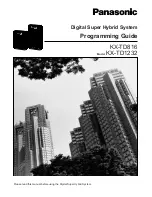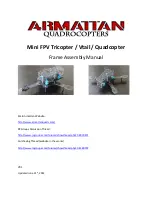
User's Guide HDSPe MADI
© RME
75
30.3 Latency and Monitoring
The term
Zero Latency Monitoring
has been introduced by RME in 1998 for the DIGI96 series
of audio cards. It stands for the ability to pass-through the computer's input signal at the inter-
face directly to the output. Since then, the idea behind has become one of the most important
features of modern hard disk recording. In the year 2000, RME published two ground-breaking
Tech Infos on the topics
Low Latency Background
, which are still up-to-date:
Monitoring, ZLM
and ASIO
, and
Buffer and Latency Jitter
, both found on the RME website.
How much Zero is Zero?
From a technical view there is no zero. Even the analog pass-through is subject to phase er-
rors, equalling a delay between input and output. However, delays below certain values can
subjectively be claimed to be a zero-latency. This applies to analog routing and mixing, and in
our opinion also to RME's Zero Latency Monitoring. The term describes the digital path of the
audio data from the input of the interface to its output. RME's digital receivers operate buffered,
and together with TotalMix and the output via the transmitter cause a typical delay of 3 samples.
At 44.1 kHz this equals about 68 µs (0.000068 s), and about 15µs at 192 kHz.
Oversampling
While the delays of digital interfaces can be disregarded altogether, the analog inputs and out-
puts do cause a significant delay. Modern converter chips operate with 64 or 128 times over-
sampling plus digital filtering, in order to move the error-prone analog filters away from the au-
dible frequency range as far as possible. This typically generates a delay of one millisecond. A
playback and re-record of the same signal via DA and AD (loopback) then causes an offset of
the newly recorded track of about 2 ms.
Low Latency!
The HDSPe MADI uses a hi-class DA-converter from Cirrus Logic, offering exceptional Signal
to Noise and distortion figures and an innovative digital filter. The exact delays caused by the
DA-conversion are:
Sample frequency kHz
44.1
48
88.2
96
176.4 192
DA (10 x 1/fs) ms
0.22
0.2
DA (5 x 1/fs) ms
0.056 0.052
DA (5 x 1/fs) ms
0.028 0.026
Buffer Size (Latency)
Windows:
This option found in the Settings dialog defines the size of the buffers for the audio
data used in ASIO and GSIF (see chapter 13 and 14).
Mac OS X:
The buffer size is defined within the application. Only some do not offer any setting.
For example iTunes is fixed to 512 samples.
General:
A setting of 64 samples at 44.1 kHz causes a latency of 1.5 ms, for record and play-
back each. But when performing a digital loopback test no latency/offset can be detected. The
reason is that the software naturally knows the size of the buffers, therefore is able to position
the newly recorded data at a place equalling a latency-free system.
AD/DA Offset under ASIO and OS X:
ASIO (Windows) and Core Audio (Mac OS X) allow for the
signalling of an offset value to correct buffer independent delays, like AD- and DA-conversion or
the Safety Buffer described below. An analog loopback test will then show no offset, because
the application shifts the recorded data accordingly.
Содержание HDSPe MAD
Страница 5: ...User s Guide HDSPe MADI RME 5 User s Guide HDSPe MADI General ...
Страница 11: ...User s Guide HDSPe MADI RME 11 User s Guide HDSPe MADI Driver Installation and Operation Windows ...
Страница 28: ...28 User s Guide HDSPe MADI RME ...
Страница 29: ...User s Guide HDSPe MADI RME 29 User s Guide HDSPe MADI Driver Installation and Operation Mac OS X ...
Страница 38: ...38 User s Guide HDSPe MADI RME ...
Страница 39: ...User s Guide HDSPe MADI RME 39 User s Guide HDSPe MADI Connections and TotalMix ...
Страница 46: ...46 User s Guide HDSPe MADI RME ...
Страница 68: ...68 User s Guide HDSPe MADI RME ...
Страница 69: ...User s Guide HDSPe MADI RME 69 User s Guide HDSPe MADI Technical Reference ...






































